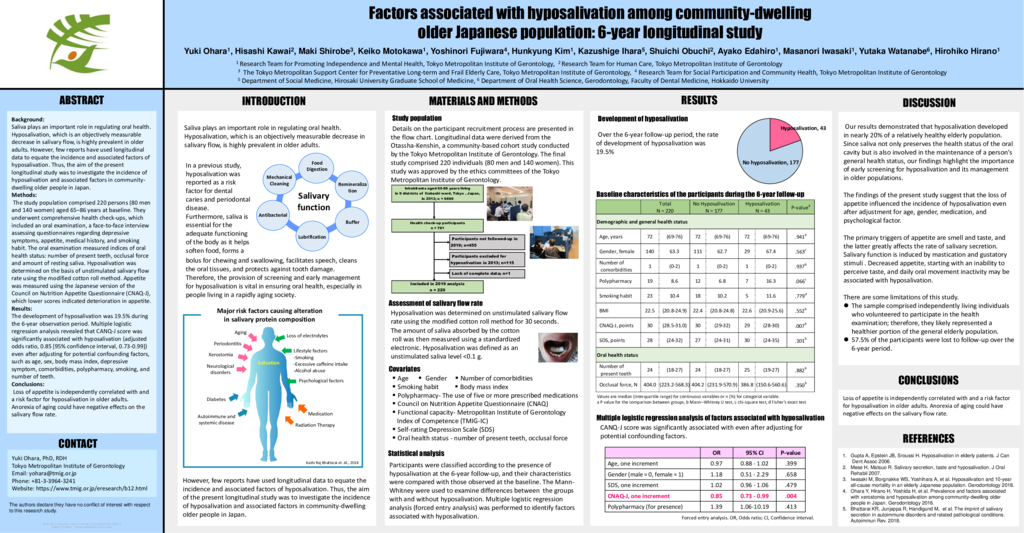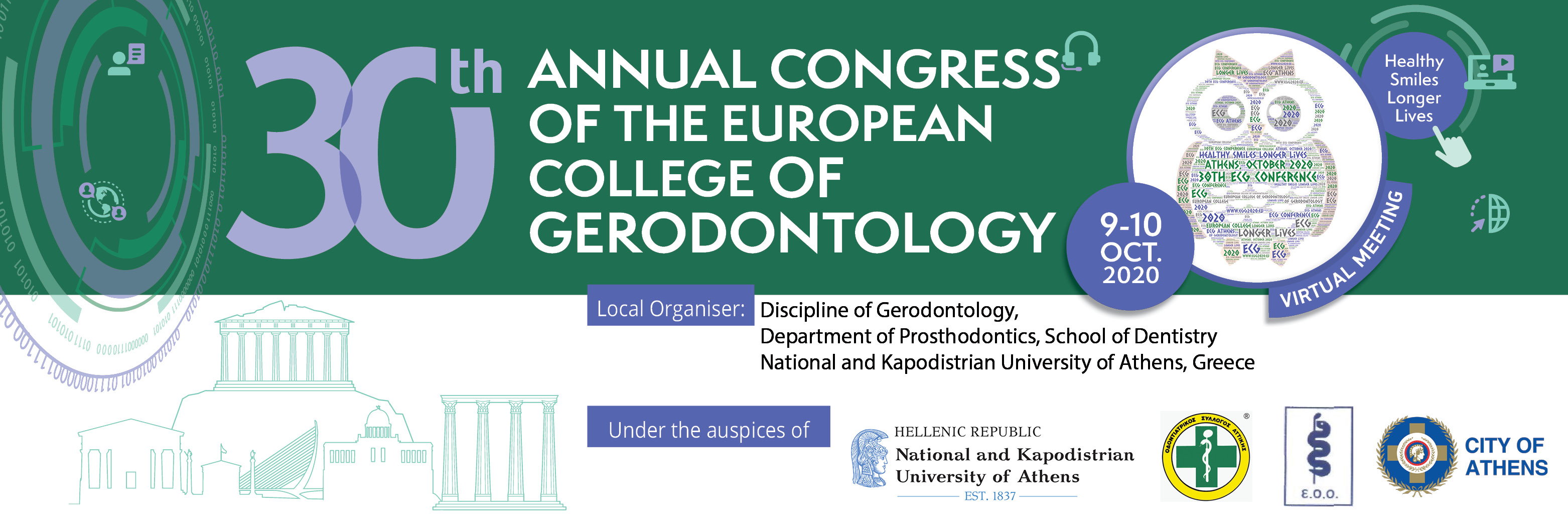Background: Saliva plays an important role in regulating oral health. Hyposalivation, which is an objectively measurable decrease in salivary flow, is highly prevalent in older adults. However, few reports have used longitudinal data to equate the incidence and associated factors of hyposalivation. Thus, the aim of the present longitudinal study was to investigate the incidence of hyposalivation and associated factors in community-dwelling older people in Japan. Methods: The study population comprised 220 persons (80 men and 140 women) aged 65–86 years at baseline. They underwent comprehensive health check-ups, which included an oral examination, a face-to-face interview assessing questionnaires regarding depressive symptoms, appetite, medical history, health behavior, and functional capacity. The oral examination measured indices of oral health status: number of present teeth, occlusal force and amount of resting saliva. Hyposalivation was determined on the basis of unstimulated salivary flow rate using the modified cotton roll method. Appetite was measured using the Japanese version of the Council on Nutrition Appetite Questionnaire (CNAQ-J), which lower scores indicated deterioration in appetite. Results: The development of hyposalivation was 19.5% during the 6-year observation period. Multiple logistic regression analysis revealed that CANAQ-J score was significantly associated with hyposalivation (adjusted odds ratio, 0.85 [95% confidence interval, 0.73-0.99]) even after adjusting for potential confounding factors, such as age, sex, body mass index, depressive symptom, comorbidities, polypharmacy, smoking, and number of teeth. Conclusions: Loss of appetite is independently correlated with and a risk factor for hyposalivation in older adults. Anorexia of aging could have negative effects on the salivary flow rate.
- 43 views




